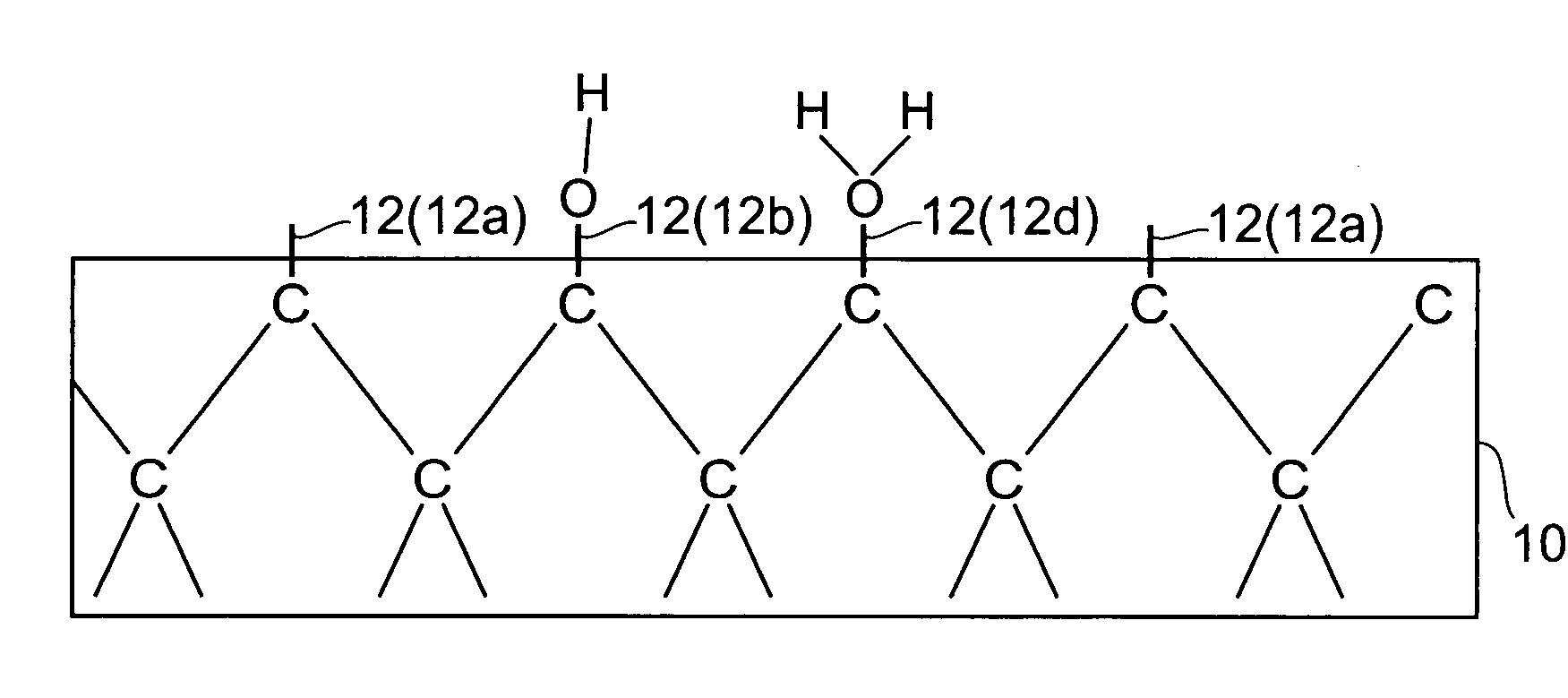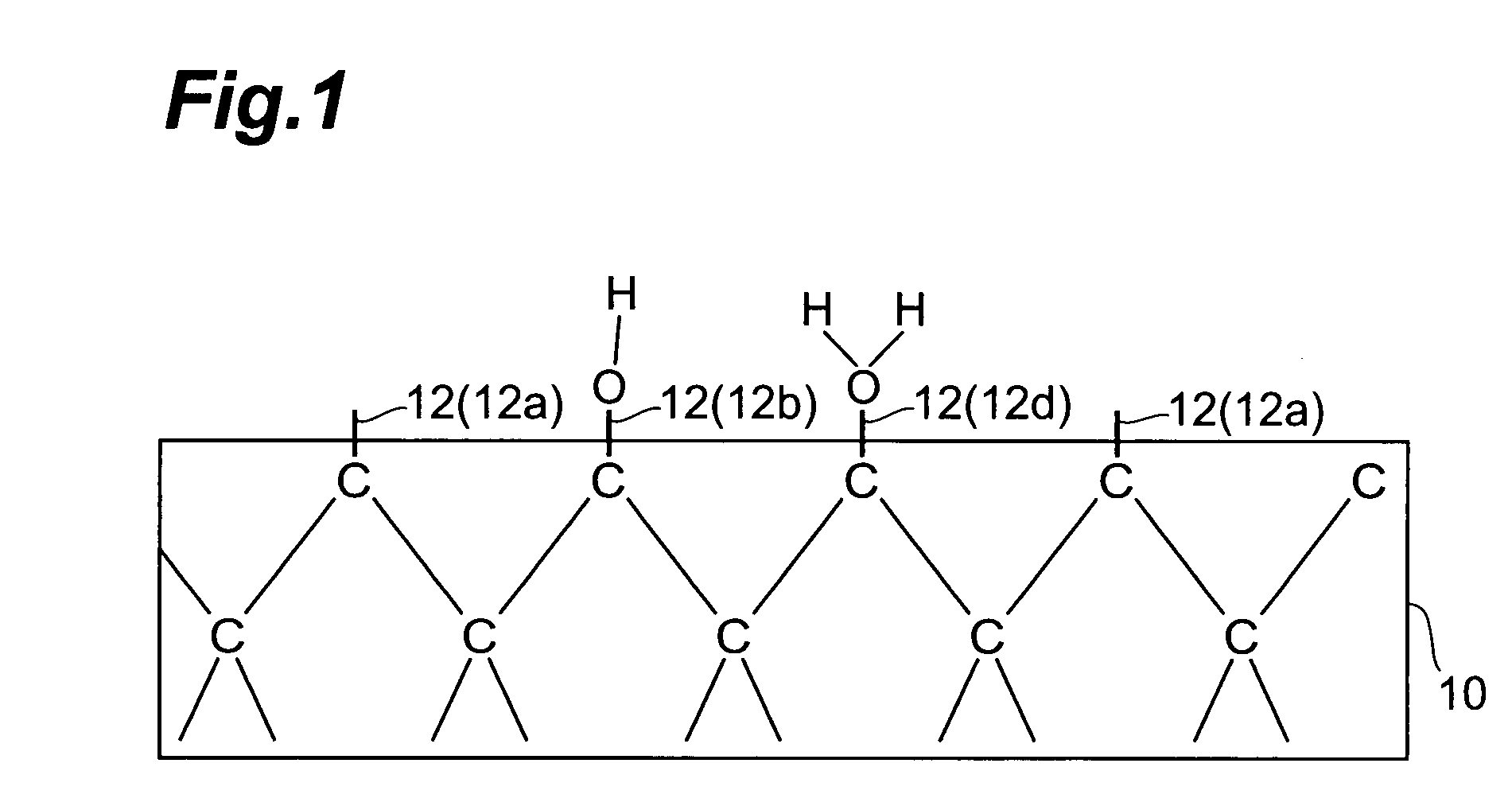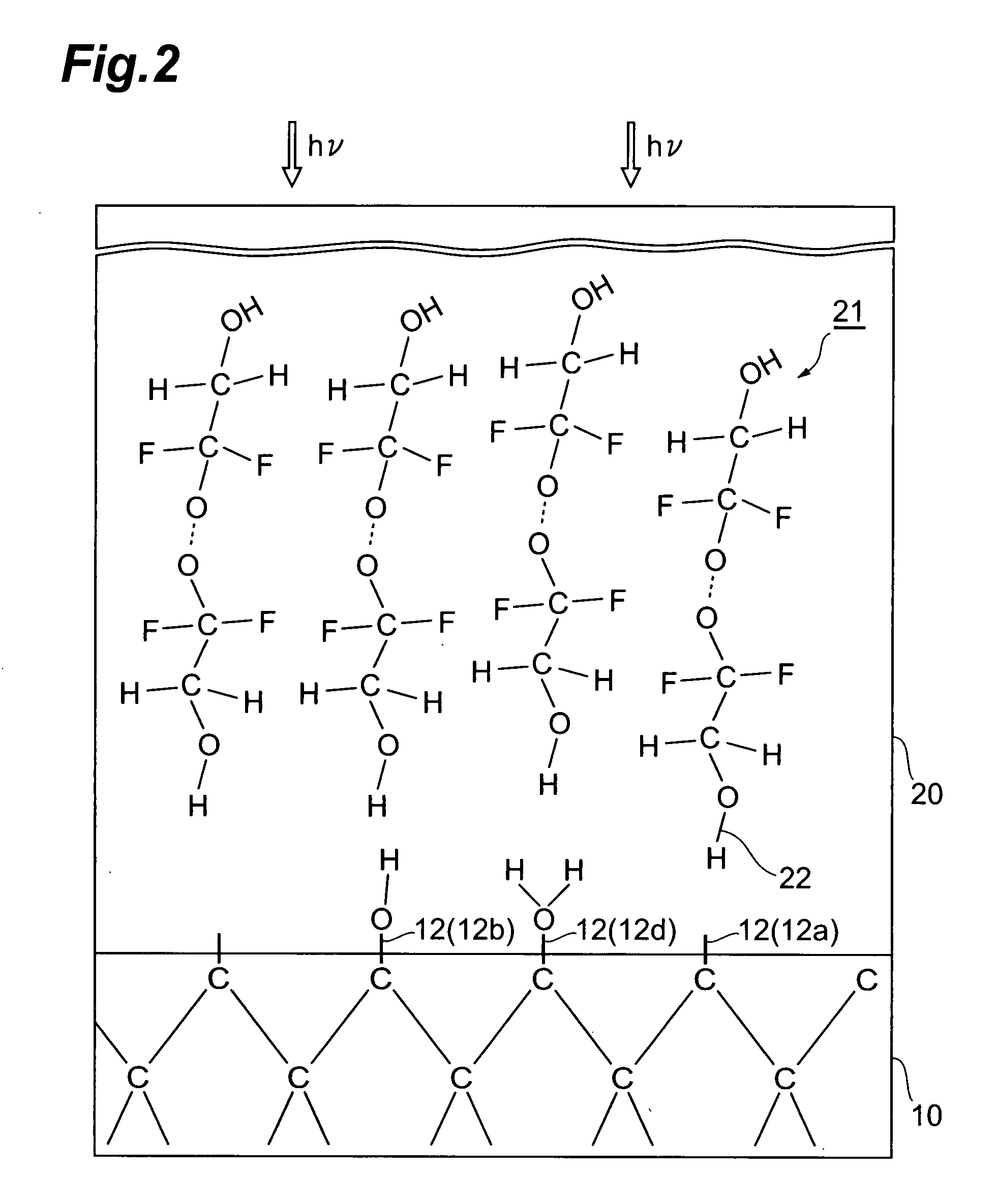Lubricant film forming method, slide body with lubricant film, magnetic recording medium, magnetic head slider, and hard disk drive
a technology of lubricant film and slide body, which is applied in the direction of maintaining the head carrier alignment, recording information storage, instruments, etc., can solve the problems of insufficient durability of lubricant film, inconvenient methods, and inability to fix lubricant to the base material. , to achieve the effect of sufficient durability
- Summary
- Abstract
- Description
- Claims
- Application Information
AI Technical Summary
Benefits of technology
Problems solved by technology
Method used
Image
Examples
first embodiment
[0104](Base Material Preparation Step)
[0105]First, a base material 10 as an object to be processed is prepared, as shown in FIG. 1. There are no particular restrictions on what the base material 10 is made of. For example, the material can be selected from metals such as aluminum, aluminum alloy, and titanium; metal oxides such as alumina; ceramics such as AlTiC (Al2O3—TiC); inorganic materials such as silicon, glass, and carbon materials (amorphous carbon); polymer compounds such as polyethylene terephthalate, polyimide, polyamide, polycarbonate, polysulfone, polyethylene naphthalate, polyvinyl chloride, and cyclic hydrocarbon group-containing polyolefins; and so on. A film of at least one selected from NiP, NiP alloy, and other alloys can be formed on the surface of these base materials by physical vapor deposition (PVD) such as sputtering or vacuum vapor deposition, or by electroplating or the like. It is a matter of course that the base material 10 may be a multilayer structure....
examples a
EXAMPLES A1-A3
[0163]Diamond-like carbon was deposited in vacuum to form the base material in the thickness of 3 nm on a Co substrate. Thereafter, the lubricant was applied onto the surface of the base material to obtain the lubricant film in the thickness of about 1.2 nm thereon. The lubricant used was Fomblin Z presented by Formula (1). Thereafter, the lubricant film was irradiated with a pulsed infrared laser beam of the wavelength of 1.064 μm (Nd-YAG laser). The pulse width of this laser was 0.3 ms. The laser irradiation intensity was set to 9.6, 11.6, or 13.5 J / cm2 in the order of Examples A1-A3, respectively. Sample substrates with the lubricant film were obtained in this manner.
second embodiment
[0170]The below will describe a method of forming a lubricant film in only a portion of a sliding surface of a slide body on a simple flat plate for simplicity.
[0171](Lubricant Application Step)
[0172]The base material as an object to be processed will be described on the basis of FIG. 11. The base material 10 has a sliding surface S that comes or can come into contact such as sliding contact with another member. There are no particular restrictions on what the base material 10 is made of. For example, the material can be selected from metals such as aluminum, aluminum alloy, and titanium; metal oxides such as alumina; ceramics such as AlTiC (Al2O3—TiC); inorganic materials such as silicon, glass, and carbon materials (amorphous carbon); polymer compounds such as polyethylene terephthalate, polyimide, polyamide, polycarbonate, polysulfone, polyethylene naphthalate, polyvinyl chloride, and cyclic hydrocarbon group-containing polyolefins; and so on. A film of at least one selected from...
PUM
| Property | Measurement | Unit |
|---|---|---|
| Length | aaaaa | aaaaa |
| Length | aaaaa | aaaaa |
| Time | aaaaa | aaaaa |
Abstract
Description
Claims
Application Information
 Login to View More
Login to View More - R&D
- Intellectual Property
- Life Sciences
- Materials
- Tech Scout
- Unparalleled Data Quality
- Higher Quality Content
- 60% Fewer Hallucinations
Browse by: Latest US Patents, China's latest patents, Technical Efficacy Thesaurus, Application Domain, Technology Topic, Popular Technical Reports.
© 2025 PatSnap. All rights reserved.Legal|Privacy policy|Modern Slavery Act Transparency Statement|Sitemap|About US| Contact US: help@patsnap.com



